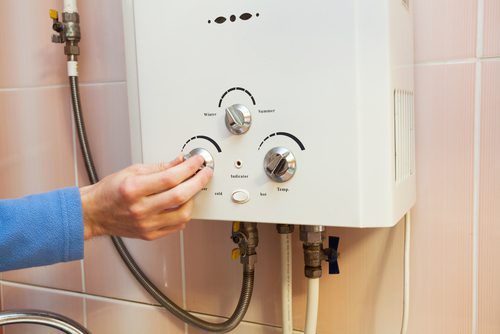The article which follows in relation to Tips on Maintaining a Water Heater is unquestionably compelling. Check it out for yourself and see what you think of it.

Warm water is necessary for everyday comfort, whether it's for a rejuvenating shower or washing recipes. To ensure your warm water system runs effectively and lasts longer, normal maintenance is vital. This post provides functional suggestions and understandings on exactly how to keep your home's hot water system to avoid interruptions and expensive fixings.
Intro
Keeping your home's hot water system might seem complicated, however with a couple of straightforward actions, you can guarantee it runs smoothly for years to come. This guide covers whatever from recognizing your warm water system to do it yourself upkeep pointers and recognizing when to call in professional assistance.
Significance of Preserving Your Warm Water System
Routine upkeep not just expands the life-span of your warm water system yet additionally guarantees it runs successfully. Neglecting maintenance can lead to decreased efficiency, higher energy bills, and also premature failure of the system.
Indications Your Warm Water System Demands Upkeep
Knowing when your hot water system needs interest can prevent major problems. Watch out for indications such as irregular water temperature level, weird noises from the heater, or rusty water.
Understanding Your Hot Water System
Before diving into maintenance tasks, it's useful to comprehend the fundamental elements of your warm water system. Normally, this consists of the hot water heater itself, pipelines, anode poles, and temperature level controls.
Month-to-month Upkeep Tasks
Normal month-to-month checks can assist catch minor concerns prior to they intensify.
Flushing the Water Heater
Purging your water heater gets rid of debris accumulation, improving efficiency and lengthening its life.
Monitoring and Replacing Anode Rods
Anode rods protect against deterioration inside the storage tank. Examining and changing them when worn is essential.
Inspecting and Readjusting Temperature Settings
Readjusting the temperature level settings makes sure optimal efficiency and security.
DIY Tips for Upkeep
You can do several upkeep tasks yourself to maintain your hot water system in leading problem.
Checking for Leakages
Frequently examine pipelines and connections for leaks, as these can cause water damage and greater expenses.
Testing Stress Relief Valves
Examining the pressure safety valve guarantees it functions appropriately and avoids too much pressure build-up.
Protecting Pipes
Protecting hot water pipelines reduces warmth loss and can save power.
When to Call a Professional
While do it yourself maintenance is helpful, some issues call for professional experience.
Complicated Concerns Needing Specialist Help
Instances include significant leakages, electrical issues, or if your hot water heater is regularly underperforming.
Regular Professional Upkeep Benefits
Expert upkeep can include complete examinations, tune-ups, and ensuring conformity with safety and security requirements.
Conclusion
Routine maintenance of your home's warm water system is essential for performance, longevity, and price savings. By adhering to these tips and recognizing when to seek expert help, you can make sure a dependable supply of hot water without unforeseen disruptions.
How to Maintain an Instant Hot Water Heater
Before tinkering with your hot water heater, make sure that it’s not powered on. You also have to turn off the main circuit breaker and shut off the main gas line to prevent accidents. Also turn off the water valves connected to your unit to prevent water from flowing into and out of the appliance. 2. When you’re done, you have to detach the purge valves’ caps. These look like the letter “T” and are situated on either side of the water valves. Doing so will release any pressure that has accumulated inside the valves while at the same time avoid hot water from shooting out and burning your skin. 3. When the purge valves’ caps are removed, you have to connect your hosing lines to the valves. Your unit should have come with three hoses but if it didn’t, you can purchase these things from any hardware or home repair shops. You can also get them from retail stores that sell water heating systems. Read the user’s manual and follow it to complete this task properly. When the hosing lines are connected, open the purge port’s valves. 4. You should never use harsh chemical cleaners or solutions when cleaning your unit. Make use of white vinegar instead. It should be undiluted and you’ll probably use about 2 gallons. 5. Now flush your water heater. This task should probably take about 40 minutes. We can’t give you specific directions for this because the procedure is carried out depending on the type, model and brand of your heater. With that being said, refer to the user’s manual. 6. When you’re done draining the unit, you have to turn off the purge port valves again. Remove the hosing lines that you earlier installed on each of the water valves. Put the valve caps (purge port) back in their respective places and be very careful so as not to damage the rubber discs that are found inside these caps. 7. Now that everything’s back in place, check your user’s manual again to find out how to reactivate your water heating system. 8. Once it is working, turn one of your hot water faucets on just to let air pass through the heater’s water supply pipes. Leave the tap on until water flows smoothly out of it. https://www.orrplumbing.com/blog/2014/september/how-to-maintain-an-instant-hot-water-heater/

Do you like reading up on Tips on Maintaining a Water Heater? Create a review directly below. We will be glad to see your feelings about this blog. We are looking forward that you visit us again soon. Those who appreciated our page please don't forget to pass it around. Bless you for your time. Come back soon.
Get Started